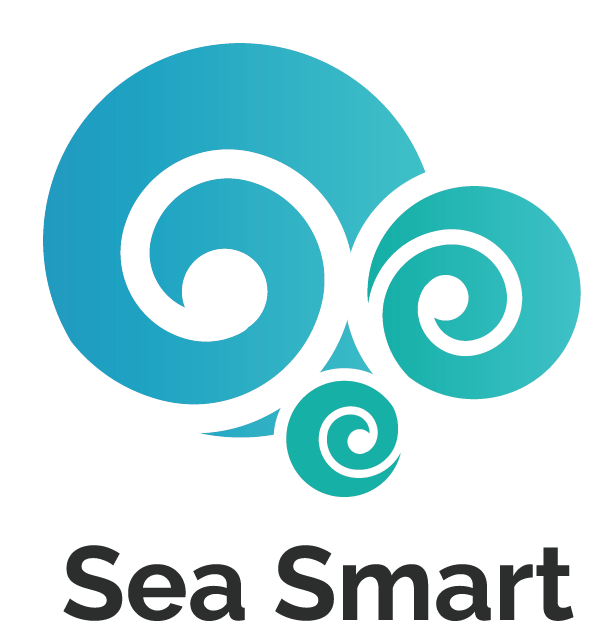Five things you didn't know about sunflower sea stars
The sunflower sea star (Pycnopodia helianthoides) is a large invertebrate species that can be found from the coastline of Alaska, down to Baja California, Mexico, including along the coastline of British Columbia and right here in Vancouver too! It can have anywhere from 16 to 24 arms, and can grow up to one metre in diameter, making it one of the largest sea stars in the northeast Pacific Ocean. And – by sea star standards – it can move fast, covering as much as 1 metre per minute.
Sunflower sea stars were once extremely common, covering underwater habitats with their large bodies, and preying on (eating) other animals, such as sea urchins. However, in 2013, a mass die off event occurred and many sea star species, including the sunflower sea star, were affected. At first, scientists did not know what was causing all of these sea stars to die, only that they were dying. Eventually, this die off event became known as sea star wasting syndrome (SSWS). It is possibly the single largest marine wildlife epidemic ever recorded. As a result of SSWS, sunflower sea stars are now an at-risk species.
What is sea star wasting syndrome?
Starting in 2013, researchers and divers began to see mass die offs of up to 20 different sea star species, including the sunflower sea star. Sea stars began to decompose, turning into gelatinous blobs. Their arms and bodies would disintegrate and fall apart, leaving behind a jelly-like mess, if anything at all. Sunflower sea stars were the hardest hit species, with more than 90% of their populations dying. It is estimated that around 5.75 billion sunflower sea stars have died since SSWS was first identified. Although SSWS has been linked to a virus in sunflower sea stars, the disease is not linked to a virus in other sea star species, and the causes remain largely unknown.
However, it is thought that climate change driving warming sea water temperatures may have contributed to the declines seen in sunflower sea star populations caused by SSWS. In 2013, when SSWS was first observed, a phenomenon known as The Blob also occurred. The Blob was basically a heat wave, but in the ocean. This patch of warm water covered a huge area in the Pacific Ocean off the coast of North America – right through the area where sunflower sea stars live, along the coastline of Vancouver, and right where SSWS was being observed. However, the timing and severity of SSWS outbreaks are not always able to be predicted based on water temperature, and the interactions of such wild diseases, such as SSWS, with climate change are complex and need more research.
Why is this important?
You may be wondering why sunflower sea stars – or any sea stars – are important. Why does it matter if one species disappears? We may only see sunflower sea stars when they are already dead and have washed up on shore, but in the ocean, they are an important part of the food web, both eating other species and themselves being eaten by larger species. Sunflower sea stars are very important predators in the marine environment. One animal they eat a lot is green sea urchins. Green sea urchins in turn, eat kelp, leaving behind what is known as kelp barrens – areas where big kelp forests used to be, that are now mostly empty. Kelp provides habitat for many marine species. Without sunflower sea stars to keep green sea urchin numbers under control, important habitat – kelp forests – can quickly disappear, leaving other animals without habitat.
Good news!
In December 2020, to recognise the critical situation this species is in, the International Union for Conservation of Nature Red List (IUCN) officially listed sunflower sea stars as Critically Endangered. The IUCN Red List is a global inventory of the conservation status of species. Critically Endangered means that sunflower sea stars at extremely high risk of extinction in the wild. While this sounds like bad news, in fact, this listing is a strong first step toward recovery because it will allow more resources to be allocated to help this species recover and encourages organizations to work together to save this at-risk species.
What can you do?
Learning about the important role our oceans and marine environments play is key to learning how to take care of them. Enrol for one of Sea Smart’s summer camps, become a marine biologist in training or get your school to attend a species at-risk workshop so you can learn more! Find out more about what you and your family can do to protect our oceans. Finally, if you see a sick or dying sea star, report your observation to the UC Santa Cruz monitoring site, on www.seastarwasting.org.
Links included:
IUCN Red List https://www.iucn.org/resources/conservation-tools/iucn-red-list-threatened-species
UC Santa Cruz monitoring site www.seastarwasting.org


